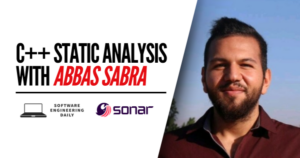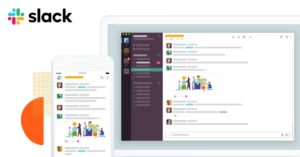Hacker Noon with David Smooke
Podcast: Play in new window | Download
Subscribe: RSS


The New York Times makes most of its money off of subscriptions. Facebook makes its money off of native advertising. Hacker News is funded by Y-Combinator. Each of these business models creates biases in the information that gets promoted on the respective platforms.
This is why I like to know the origin story and the business models behind the publications that I read. Published content is shaped by the profit motive of the publication.
And yet, last month, I repeatedly found myself reading high quality content on a Medium publication that I did not know the origin of: Hacker Noon. Hacker Noon is a popular Medium publication that syndicates curated content written about software.
Let me explain “syndication.” Imagine that I just spent three days on a Medium post about functional programming, and I have zero followers on social media. How can I get people to read awesome post? The answer is syndication. I can submit my Medium post to Hacker Noon. This gives me free distribution, and it gives Hacker Noon free content—a win-win relationship.
But why was it worth it for Hacker Noon to spend time curating content? That syndication process takes time. You have to read through lots of submissions, sometimes you have to send it back to the author to have it edited. And this is all to build a following on Medium. I have not heard of Medium being a profitable platform to build a business.
It’s worth pointing out the difference between Medium and WordPress.
On WordPress, this model of curated syndication has worked to massive success—for example, the Huffington Post and TechCrunch. These businesses make millions of dollars from advertising networks, because they are built on WordPress, and WordPress is an open model.
A publisher on WordPress can install plugins that serve ads from third party providers like Outbrain and Taboola. A WordPress site can also install any kind of data collection scripts, to gather data on visitors, and sell it to the highest bidder.
The lack of third party plugins is the blessing and the curse of Medium.
Because there is no third party ecosystem, reading content on Medium is a beautiful experience. The page loads quickly and predictably. There are no random scripts that are blocking the page as they hog your browser’s resources. When you go to close the page, there is never a popup that asks you to subscribe to a newsletter.
When I read content on Medium, I am not getting slapped across the face with ads for reverse mortgages and açaí berries. I am not being tagged for retargeting. It’s a beautiful experience. But Medium seems like an ecosystem that would not allow for the content syndication business like Hacker Noon.
I wanted to know who was running Hacker Noon, how the business works, and what it says about Medium as a publishing platform.
Hacker Noon turns out to be part of a network of Medium publications called AMI. AMI’s network includes sites like Art + Marketing, Future Travel, and Fit Yourself Club–all of which are distinct syndication platforms. David Smooke is the CEO of AMI, and he joins this episode to explain how his business works, how he has scaled the content syndication business, and why he is betting on Medium. It was a detailed look into the state of online publishing and where it might be headed.
If you don’t read Hacker Noon already, one article to start with that shows off the quality of content is Learn Blockchains By Building One. I interviewed the author of that article, Daniel Van Flymen, and it has been one of the most popular episodes of Software Engineering Daily.
Transcript
Transcript provided by We Edit Podcasts. Software Engineering Daily listeners can go to weeditpodcasts.com/sed to get 20% off the first two months of audio editing and transcription services. Thanks to We Edit Podcasts for partnering with SE Daily. Please click here to view this show’s transcript.



















